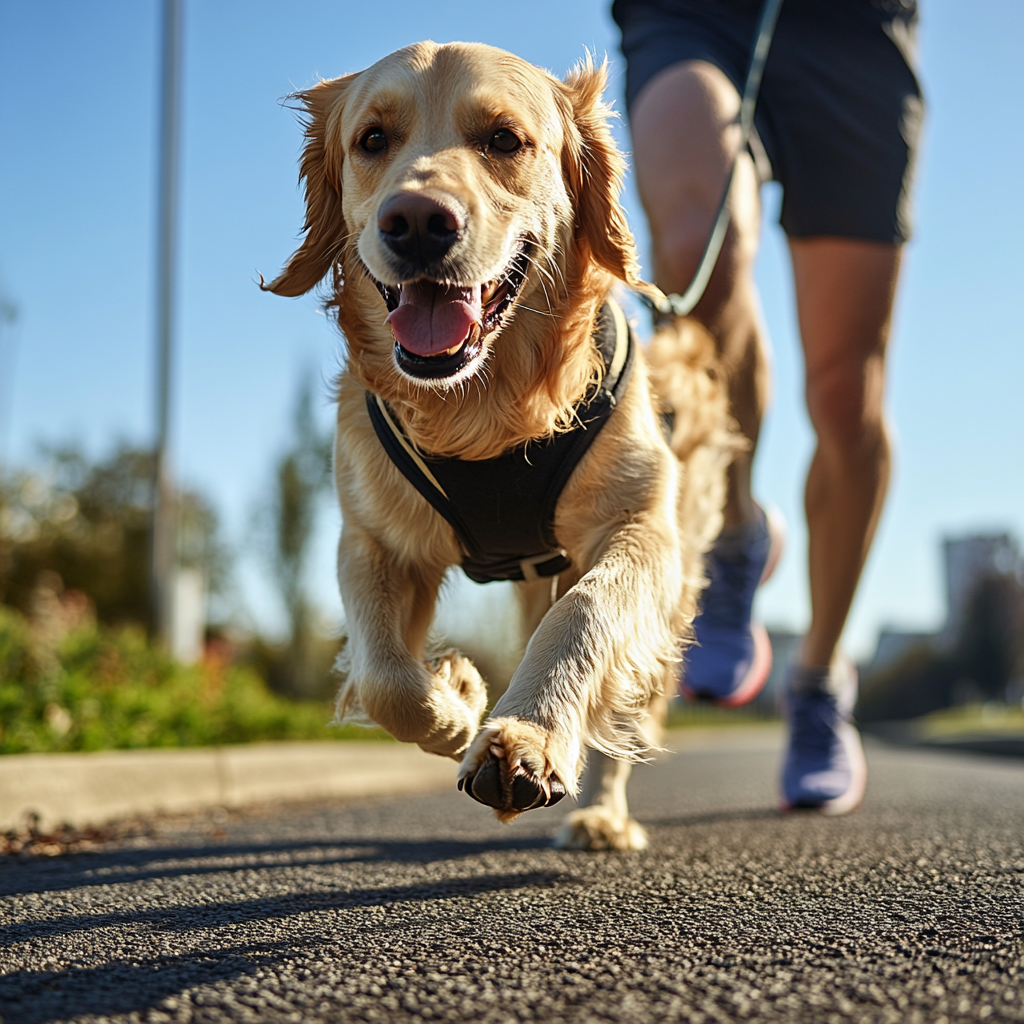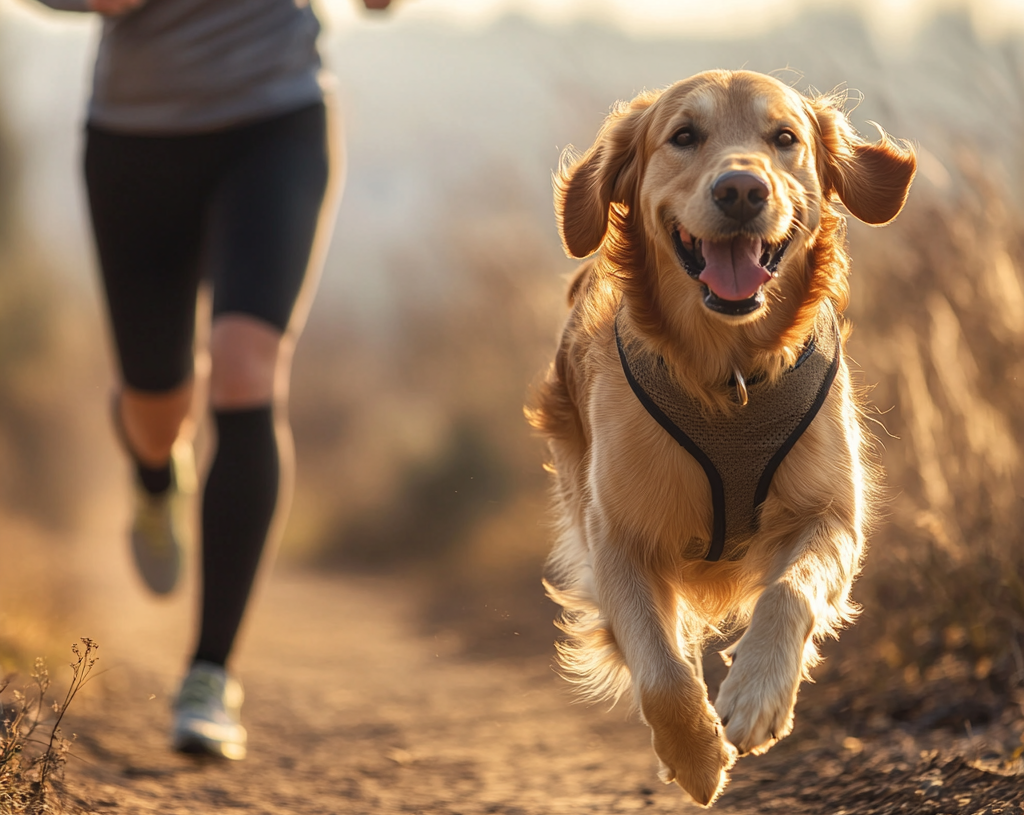Learn how to train your dog to be your running partner with these easy steps. Get expert tips for conditioning your dog, maintaining safety, and ensuring a positive running experience for both you and your dog.
How to Train Your Dog to Be Your Running Partner: Expert Tips
Running is a fantastic way to stay fit, but it can become even more enjoyable if you have a furry companion by your side. If you’ve ever wondered how to train your dog to be your running partner, this guide will provide you with the knowledge and practical steps you need to make the experience fun, safe, and rewarding for both of you.

Whether you’re an experienced runner or just starting, introducing your dog to your running routine can strengthen your bond, provide exercise for your dog, and make running more enjoyable. Let’s explore the best methods and tips to ensure your dog becomes the perfect running companion.
Table of Contents
- Why Should You Train Your Dog to Be Your Running Partner?
- When to Start Training Your Dog for Running
- Choosing the Right Dog for Running
- How to Train Your Dog to Be Your Running Partner: Step-by-Step Guide
- Safety Tips When Running with Your Dog
- How to Maintain a Healthy Running Routine for Your Dog
- Common Problems When Training Your Dog to Be Your Running Partner
- Conclusion: Enjoying Runs with Your Dog
Why Should You Train Your Dog to Be Your Running Partner?
Training your dog to be your running partner is not just about exercise—it’s about creating a deeper connection with your pet. By running together, you both get a physical and mental workout. For dogs, running can help prevent obesity, reduce anxiety, and keep them happy and healthy. For you, it means a motivated running buddy and better consistency in your routine. Dogs make excellent running companions because they provide you with added motivation, and they love being with you, especially during outdoor activities.
Additionally, a well-trained dog is less likely to pull on the leash or get distracted, allowing you to enjoy a more peaceful and productive run. Training your dog to be your running partner is a rewarding journey for both of you!
When to Start Training Your Dog for Running
Not all dogs are suited for running, and even dogs that are may need to go through a proper training process. The age, breed, size, and overall health of your dog are important factors to consider before you start training. For instance, large breeds like Golden Retrievers or Border Collies are well-suited for running, while smaller or brachycephalic breeds (think Bulldogs or Pugs) may not be the best fit for long-distance running.
For puppies, it’s important to wait until they’re fully grown (around 18 months old) to prevent joint stress. If your dog is older or has pre-existing health conditions, consult with your vet to make sure they are physically capable of running.
Choosing the Right Dog for Running
When choosing a dog to be your running partner, there are a few things to consider. Certain breeds have more energy and stamina, making them natural runners. Breeds like the Labrador Retriever, Vizsla, Weimaraner, and Australian Shepherd are all excellent choices for running, as they have high energy levels and a love for outdoor activities.
On the other hand, dogs with shorter snouts (brachycephalic breeds) may struggle with breathing, and dogs with long, slow legs (like Dachshunds) are not built for endurance running.
Make sure your dog is physically fit, enthusiastic, and capable of handling long or intense runs before you begin training.
How to Train Your Dog to Be Your Running Partner: Step-by-Step Guide
Training your dog to be your running partner takes time, patience, and consistency. Here’s how to start:
Start Slow with Short Walks
Before you hit the pavement running, it’s important to establish a solid walking routine. Begin with regular walks to help your dog build endurance and adjust to the exercise regimen. Start with 10-15 minute walks and gradually increase the time and intensity. This prepares both you and your dog for the transition to running.
Introduce the Leash and Running Gear
Get your dog accustomed to wearing a leash and running gear. If you plan to use a harness, make sure it’s comfortable and fits correctly. A comfortable leash will prevent any jerks or tugs, which could be stressful for both you and your dog. You may also want to invest in a hands-free running leash, which attaches around your waist, allowing you to maintain a steady pace without being distracted by the leash.
Increase the Distance Gradually
Once your dog is comfortable with the walking routine, begin running short distances. You don’t want to overwhelm your dog by going too fast or too far right away. Start by alternating between running and walking, gradually increasing the length of your runs. Over time, your dog will adapt to the pace and can eventually run the entire distance without needing to stop.
Use Positive Reinforcement
During training, use rewards to encourage good behavior. Treats, praise, and even a fun game after the run will reinforce positive habits. If your dog behaves well on the leash and keeps up with your pace, reward them! Positive reinforcement will motivate your dog to stay on track and enjoy the training process.
Monitor Your Dog’s Health and Energy
Always keep an eye on your dog’s physical condition. If your dog starts to pant excessively, slow down, or show signs of fatigue, it’s time to take a break. Dogs are often enthusiastic, but they may push themselves too hard if you don’t pay attention to their needs. Make sure your dog is well-hydrated and avoid running during extreme weather conditions.
Safety Tips When Running with Your Dog
Running with your dog is a fun and healthy activity, but safety should always be a priority. Here are some key safety tips to follow:
- Stay on appropriate terrain: Avoid harsh or uneven surfaces, as these could cause injury to your dog’s joints or paws.
- Be mindful of the weather: Avoid running in extreme heat or cold. Dogs can easily overheat or get frostbite.
- Hydrate your dog: Make sure to bring water for both yourself and your dog, especially on longer runs.
- Keep your dog on a leash: This will help you maintain control over your dog, ensuring they don’t dart off or get distracted.
How to Maintain a Healthy Running Routine for Your Dog
Consistency is key when training your dog to be your running partner. Stick to a schedule and gradually increase the duration of your runs. Ensure that your dog gets enough rest and recovery time in between runs. Regular checkups with your vet can also help monitor your dog’s health and prevent injuries.
Common Problems When Training Your Dog to Be Your Running Partner
Training your dog to run alongside you might come with some challenges. These can include leash pulling, distractions, or lack of stamina. If your dog pulls on the leash, try using a no-pull harness or training them with commands to walk at your side. Distractions can be avoided by keeping to quiet routes or paths with fewer distractions like other dogs or squirrels.
If your dog is struggling with stamina, consider starting with shorter runs and gradually building up their endurance over time. With patience and consistency, most dogs can become excellent running partners.
Conclusion: Enjoying Runs with Your Dog
Training your dog to be your running partner is a rewarding experience that requires dedication, patience, and consistent effort. With the right approach, you and your dog can enjoy countless miles together, staying fit, healthy, and connected. Follow the steps and tips outlined in this guide, and soon enough, your dog will be by your side as your perfect running companion!
For more pets related articles click here https://ledstk.com/category/pets/ and for recipes lovers see here sotastyrecipe.com
